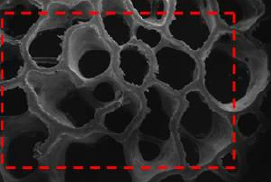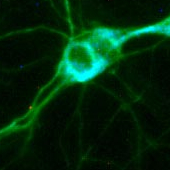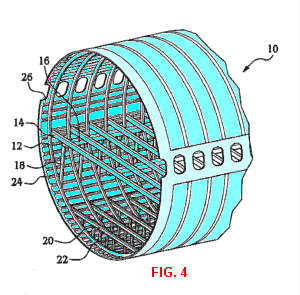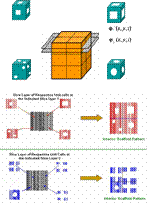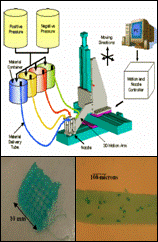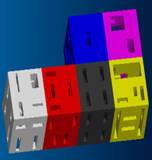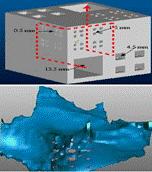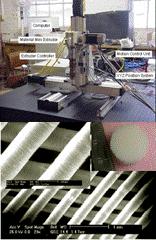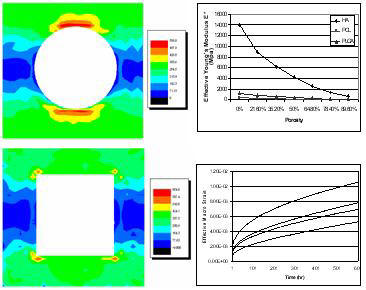Grants
Funded Research Projects on Biomanufacturing and Computer Aided Tissue Engineering:
Project Title: Heterogeneous Bioprinting for Drug Testing ModelFunding Agency: Industrial Funding
$500,000, 10/01/2015 – 9/31/2018, (PI)
Project Title: Heterogeneous Bioprinting for In Vitro Drug Toxicology Testing
Funding Agency: Drexel University Venture Funding
$75,000, 10/01/2015 – 9/31/2016, (PI)
Project Title: International Symposium for the Integrated Stem Cells, Nanomaterials and Biomanufacturing: Look for Synergies
Funding Agency: Chinese Academy of Sciences and Drexel University
$35,000, 6/1/2013 (PI)
Project Title: Integrating biomechanical engineering research and design in a co-operative education curriculum
Funding Agency: National Science Foundation:
$199,196, 10/01/2012– 9/30/2015 (as Co-PI, with A. Morss-Clyne (PI), Noh and Tangorra)
Project Title: A dual functional of microplasma surface treatment and biologics printing
Funding Agency: National Science Foundation: NSF-CMMI-1030520
$300,000, 8/15/2010 – 8/14/2013 (PI)
Project Title: International Workshop for Bio-Nano Manufacturing and Integration
Funding Agency: National Science Foundation: NSF-CMMI-1118559
$25,000, 1/01/2011 – 12/312011 (PI)
Project Title: EAGER: A Hybrid Nano-Bioprinting System for Tissue Engineering
Funding Agency: National Science Foundation: NSF-CMMI-1038769
$119,420, 9/1/2010 – 8/31/2011 (as Co-PI)
Project Title: Feasibility and Fabrication of 3D Scaffolds for Tissues/Organs
Funding Agency: Johnson & Johnson
$75,000, 1/1/2010 - 8/30/2010 (PI)
Project Title: Study Bio-deposition Induced Effects to Living Cells
Funding Agency: National Science Foundation: NSF-0700405
$225,000, 10/1/2007 - 9/30/2010 (PI)
Project Title: Graduate Research Supplements (GRS)
Funding Agency: National Science Foundation: NSF-0941423
$43,000, 10/1/2009 - 9/30/2010 (PI)
Project Title: MRI: Acquisition of 3D Micro-manufacturing Instruments for Bioengineering research at Drexel University
Funding Agency: National Science Foundation: NSF-0923173
$344,330, 10/1/2009 – 8/31/2011 (Co-PI)
Project Title: Computer-Aided Tissue Engineering
Funding Agency: National Science Foundation: NSF-ITR for "National Priorities": NSF-0427216
$1,000,000.00, 10/1/2004 - 9/30/2008 (PI)
Project Title: Collaborative Workshop: Grand Challenges in Bio-Nano Integrated Manufacturing for Year 2020.
Funding Agency: National Science Foundation: NSF-0650093
$40,000, 10/1/2007 - 9/30/2008 (PI-Drexel)
Project Title: Bioprinting of 3-D Organ Chambers
Funding Agency: NASA
$100,000, 4/1/2006 – 12/31/2009 (PI)
Project Title: GAANN Fellowships in Biomechanical Engineering
Funding Agency: Education Department:
$380,000, 6/1/2006 – 5/31/2009 (as Co-PI)
Project Title: Representation and Design of Heterogeneous Structures
Funding Agency: National Science Foundation: NSF-ITR: NSF-0219176
$482,605, 10/1/2002 – 9/30/2005 (PI)
Project Title: International Workshop for Biomanufacturing
Funding Agency: National Science Foundation: NSF-0520958
$30,000, 6/1/2005 - 5/30/2006 (PI)
Project Title: MRI: Acquisition of a High Resolution X-ray Tomography Unit
Funding Agency: National Science Foundation: NSF-0521309
$349,267, 10/1/2005 - 9/30/2006 (Co-PI)
Project Title: Accuracy and Stability of Computational Representations of Swept Volume Operations
Funding Agency: NSF/DARPA – 0310619
$450,000, 7/1/2003 – 8/30/2006 (Co-PI)
Project Title: Biopharmaceutical and Anatomical Tissue Replacement Structures:
Process Modeling and Simulation
Funding Agency: Therics Corporation
$253,052, 11/1/2002 – 10/30/2005 (PI)
Project Title: Combined Research and Curriculum Development in Tissue Engineering
Funding Agency: National Science Foundation: NSF-9980298
$499,602, 10/1/1999 – 9/30/2004 (Co-PI)
